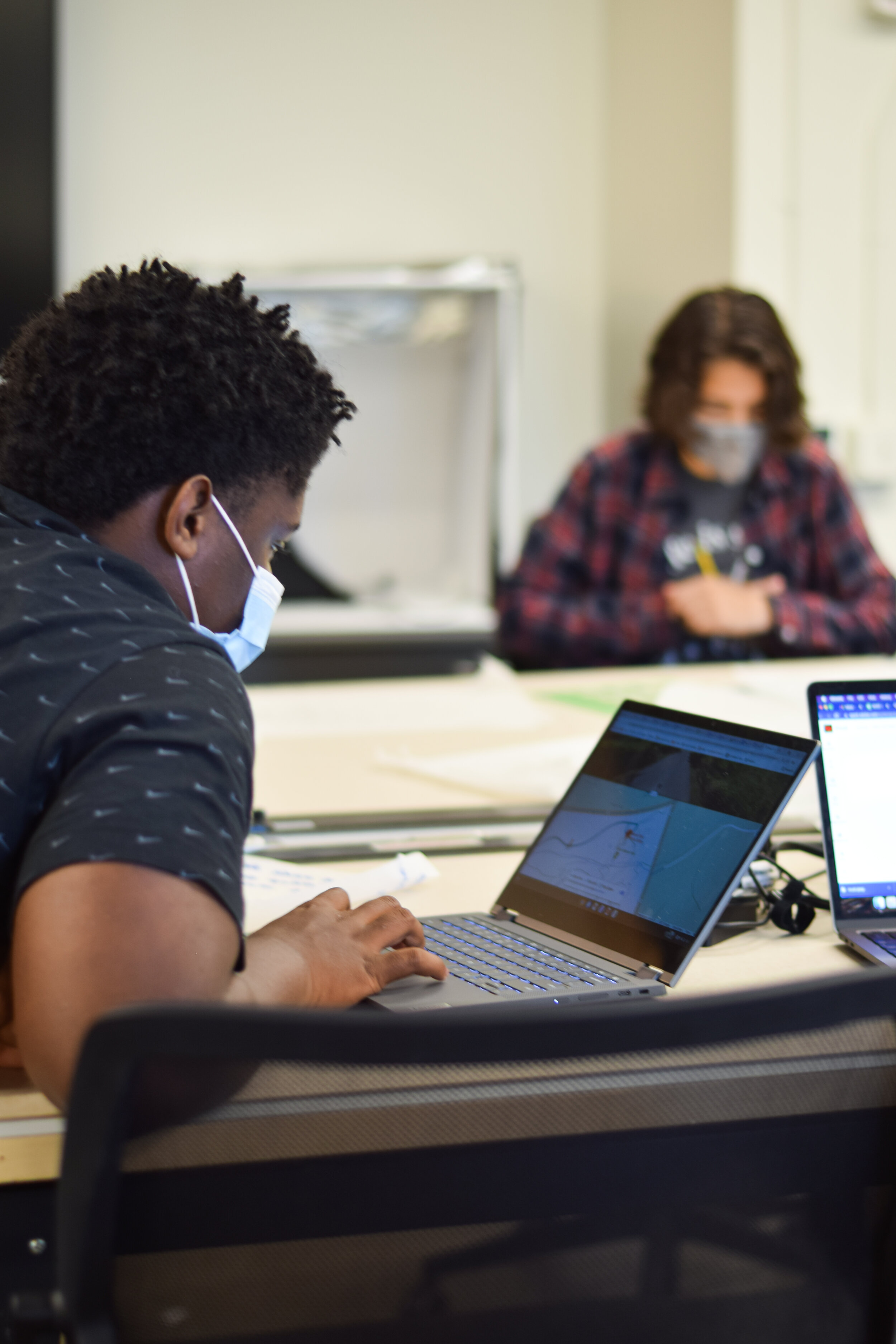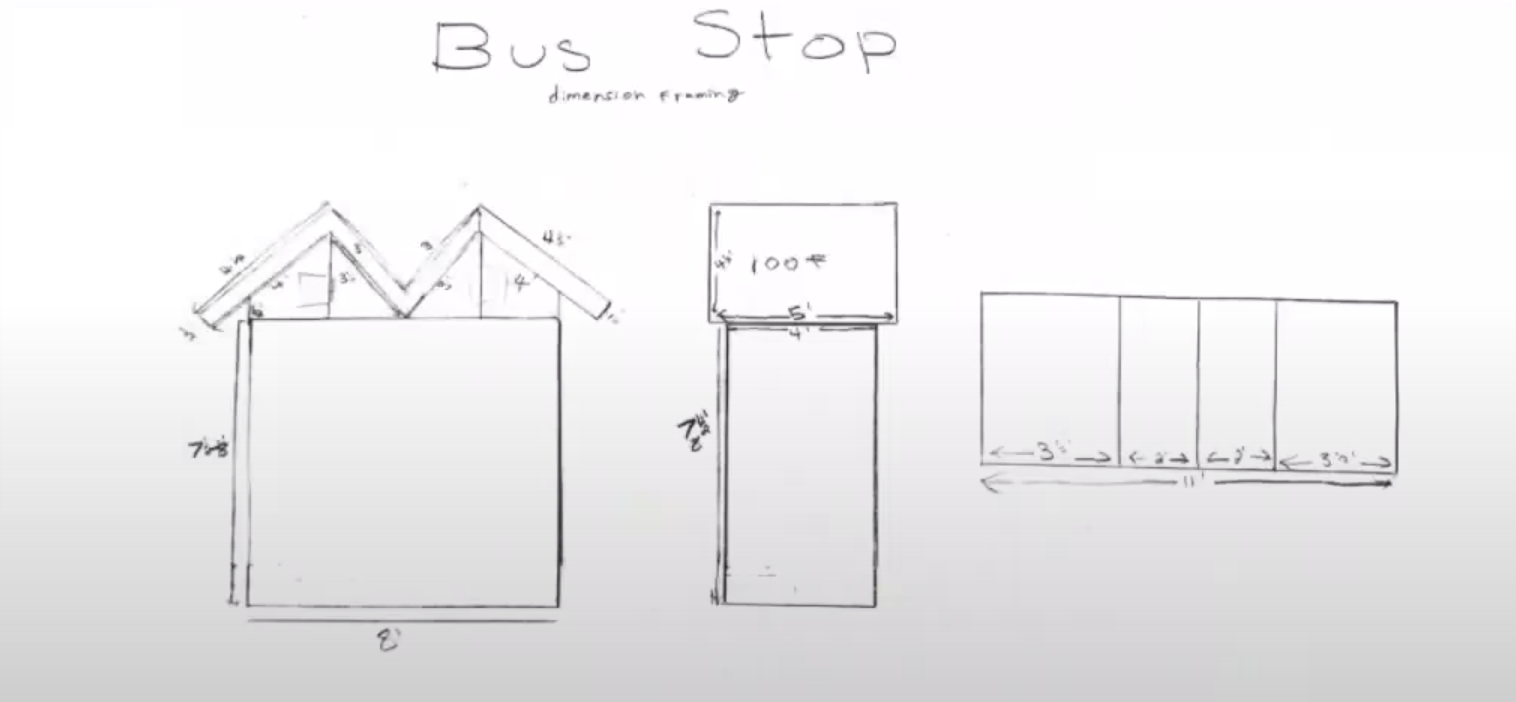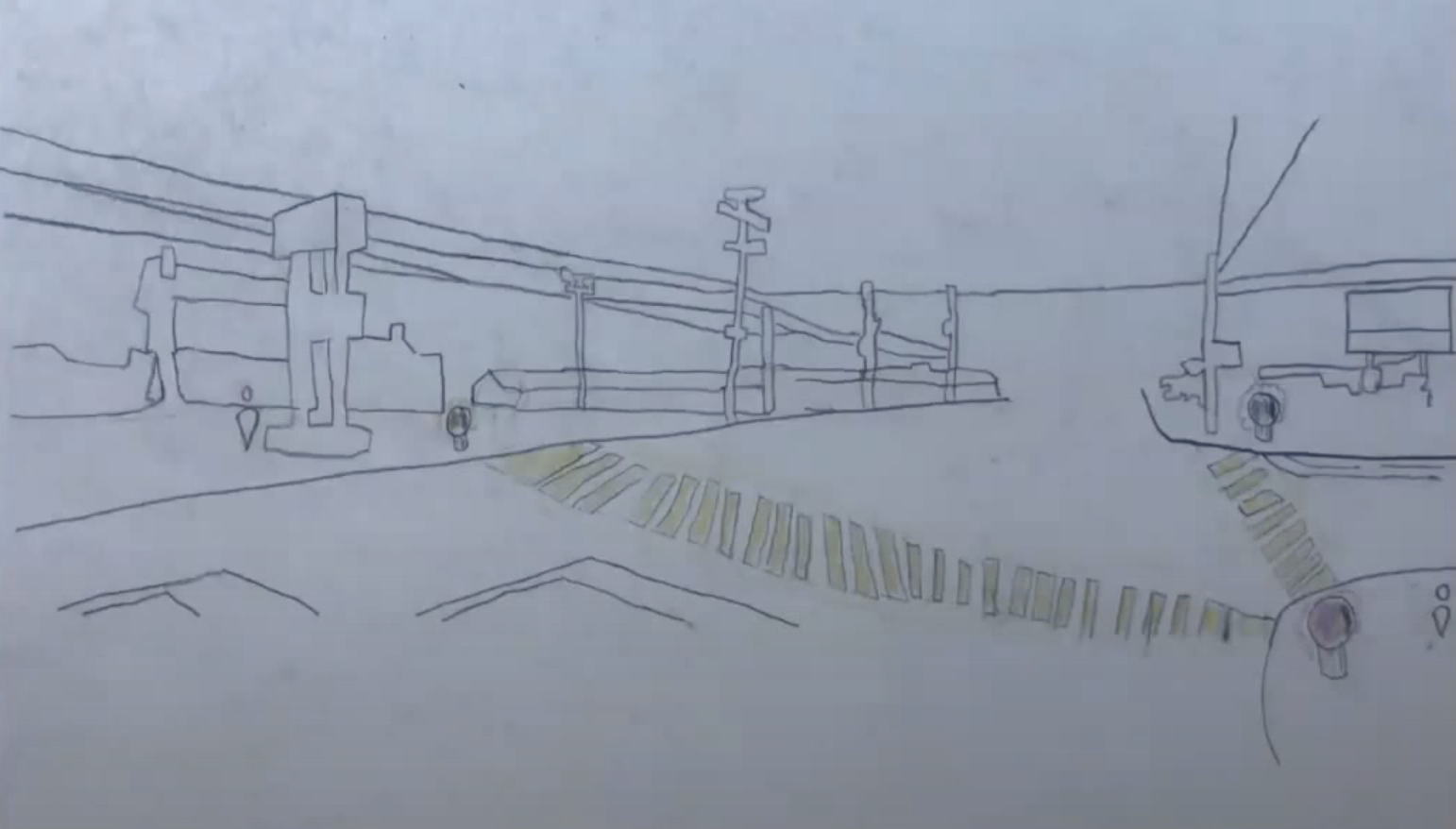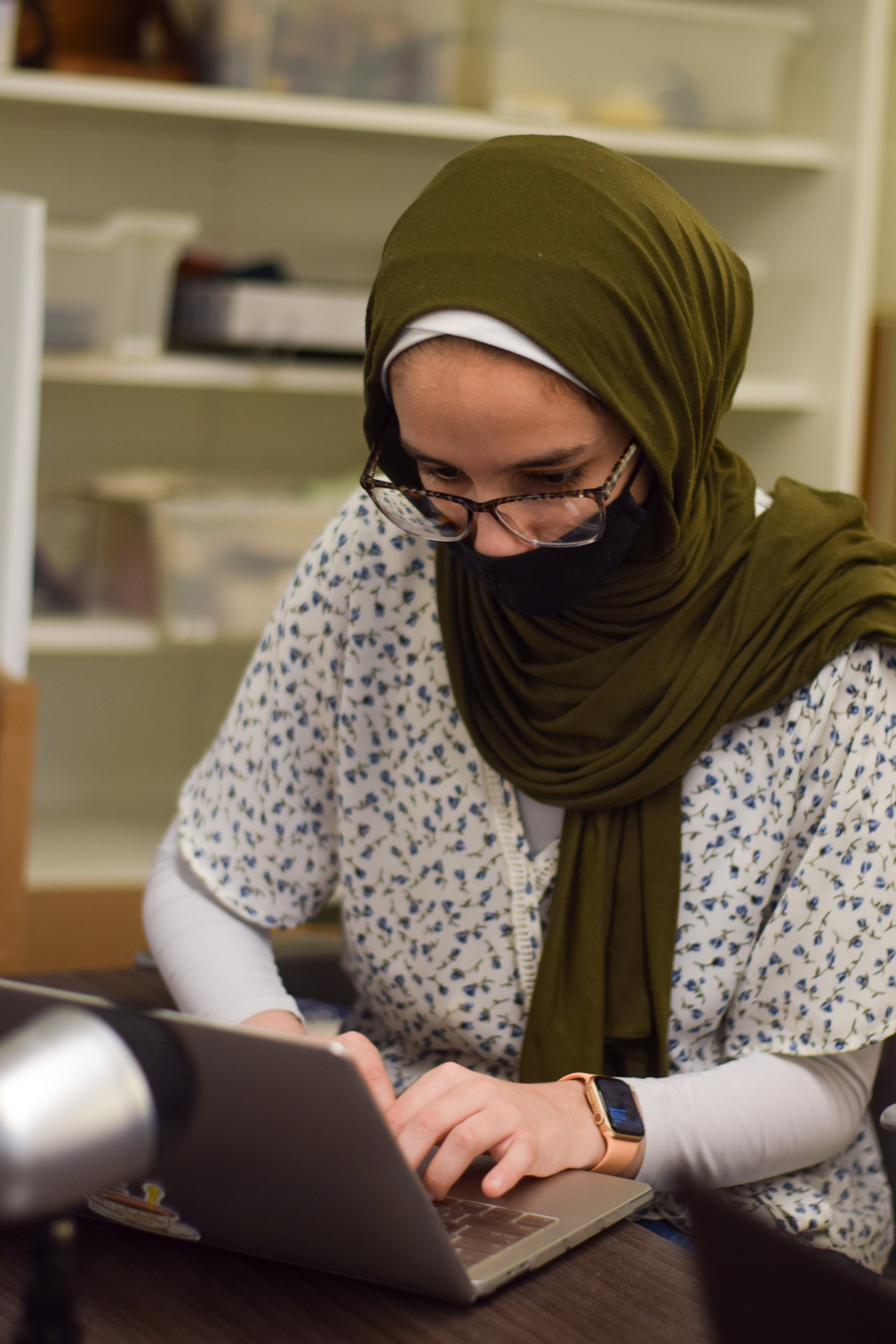Nashville Youth Design Team Final Projects
By Naffie Njie, Content and Marketing Intern
8 min read On July 15th, 2021, 14 student interns on the Nashville Youth Design Team presented their youth wellness design interventions to mentors and community members.
The Nashville Youth Design Team is a group of 14 high school student interns that are working to make helpful changes to Nashville neighborhoods. The Civic Design Center’s Design Your Neighborhood program was created to encourage young people to impact their own communities through design. The students studied design concepts and interviewed middle schoolers to get their perspective on how to improve wellness for Nashville youth. They did outreach to assess the needs of young people in the Metro area with a focus on marginalized communities. Last fall, they began researching what built environmental factors would impact youth wellness and they converted their extensive data into multiple design and advocacy projects.
For more background information on the work and research the NYDT has been doing, read the first and second blog posts.
Nashville Youth Wellness in Action
Board depicting youth wellness priorities in the city
Each group chose a wellness category based on the topics they identified in their map. They recorded podcasts about the issues surrounding their focus and spoke with Nashville residents and community leaders. The student groups created infographics that detailed the needs in each zip code they researched. Then they created advocacy campaigns which included graphics, educational resources, policy agendas, potential community events, and op-ed pieces to educate people about youth wellness.
Martina and Uma record their podcast about parks and open space
Finally, during Design Week, the students came up with design interventions that could benefit young people in Nashville. They were each granted a potential $2,000 budget for their idea, provided by the Vanderbilt Curb Center. They began by writing a vision statement for their design and picking a location. This evolved into idea boards with pictures of potential designs; then they worked with design interns, fellows, and staff to create 3D drawings and site plans. The students then completed project plans to solidify what materials they needed, how much their design would cost, how much time they needed, and how to engage their communities. They have applied their understanding of community design needs and youth wellness goals and created the following five design projects.
Food Resources
Antioch Farmers Market
Cydney and Mia work with Design Intern on their farmers market design
Cydney Thompson and Mia Clark
Cost: $9,000
Materials: Tents, paint, sings, recreation, and more
Cydney and Mia are two student interns that noticed that there is low access to fresh food in the area and want to provide a space where people can get a variety of farm fresh produce. Their research focused on how to make food resources more accessible to youth in the Antioch and Metro Nashville community. They spoke with community activist, Brenda Morrow, about food desserts and the food needs in the Edgehill neighborhood.
“We interviewed people around the Belmont community and asked them about their access to fresh foods. It kind of opened my eyes about it. We have to make everyone feel like they have a safe place to go when we implement this.”
Mia converses with Edgehill community leader, Brenda Morrow, about her experience with food resources in their community garden
Design: The students came up with an idea to activate a farmers’ market in the Global Mall at the Crossing parking lot. The market would include 20 tents with fresh food, art, and other goods. They want to make it accessible to as many people as possible by having vendors accept EBT payments. There will also be a mural painted in the middle of the lot.
Installation: The market would be in front of the main entrance of the Global Mall. They would set up 15-25 tents with one or two foldable tables in each one. There would be foldable tables and chairs for seating. The mural paint will be cornstarch based and easy to wash away after.
Partnerships and Permits: They would partner with the owner of the Global Mall, District 32 Council Member Joy Styles, John Cooper, the Nashville Mayor, food justice organizations in the city, local artists, and various merchants. Another group is working on a similar project in the same location, so they hope to partner with them as well.
Outreach: The interns will promote the event on social media and connect with neighborhood organizations and young people to encourage them to help paint the mural.
Evaluation: The team will get feedback from people who shopped at the farmers’ market and community members. NYDT members will count attendees and survey shoppers on what they like and what they would like to see.
Parks and Open Spaces
Pop-Up Festival at Warner Park Nature Center
Chris works on his project map during Design Week
Martina Ragab, Chris Barksdale, Uma Peters
Cost: $1,350
Materials: Soccer goals, volleyball net, cornhole, interactive games, and more
Martina, Chris, and Uma noticed that young people in Nashville needed more public spaces to hang out in. Their research was based around parks. They found that there are about 10,000 acres of park space in Nashville but much of it is not accessible to teens.
“Our end goal is to have a big court that people could use for different sports activities. We want it to be a place where teenagers could go to study and get their homework done or play and hang out. It’s really important for teens to go out and socialize with each other.”
Design: Their plan is to activate the Warner Park Nature Center of Highway 100 and Old Hickory Blvd for a two-day pop-up festival. The park has a lot of unused open space and is a relatively popular park already. They want to use the field for sports, have sidewalk art, food trucks, and other games.
Installation: The students and other NYDT members would spend about three hours setting up the park. They want to utilize existing materials and get food trucks that are willing to volunteer free food and services.
Maintenance: They would clean up after each day and leave the park the way they found it. The group would consider getting students to clean for community service hours.
Partnerships and Permits: The event would be partnered with Greenways for Nashville, Friends of Warner Parks and Metro Parks. They would try to partner with a food truck or restaurant. They would get a permit from Metro Parks.
A map to arrive at the park for the event
Outreach: The pop-up would be promoted on social media, they would email people about the event, they would contact schools and athletic programs to inform as many young people in the area as possible.
Evaluation: They will compare how many people normally visit the park with how many attended the pop-up event. They would have a question box with a survey about parks.
Housing
Affordable Housing Awareness Bus Stop
DaMya works on sketching out a bus stop idea
DaMya Mitchell, Charlie Del Pino, Oliver Beaulieu
Cost: $1,593
Materials: Wood posts, plywood, paint, roofing shingles, and more
DaMya, Charlie, and Oliver researched affordable housing in Nashville. They found that affordable housing is not accessible for low-income people and the initiatives in place to curb the problem are not enough. Youth wellness is heavily impacted by a child’s access to housing or their home life.
“I think working with NYDT taught us a lot about actually planning and implementing projects and following through with stuff. It’s a lot of real-world experience.”
Mini-house bus shelter design
More descriptive drawing of the bus stop
Design: They created a project idea that would make a house shaped bus stop with affordable housing information and resources posted inside near the Madison Community Park. This would provide shelter for bus riders, homeless people, and anyone else who needs it, while further educating the public about Nashville’s housing crisis. The infographics that the NYDT interns created will be among the posted information. Outside of the shelter/bus stop would be a cube for people to share their opinions about housing or something they learned inside the stop.
Maintenance: They would resupply markers and fix any damage (weather, vandalism, cleaning, physical) with the help of WeGo and community members. If those groups are not able to check on the shelter, NYDT interns will do it.
Partnerships and Permits: The students would partner with WeGo Public Transit, District 9 Council Member, Tonya Hancock, and Make Nashville. They would need a permit from Hancock and permission from WeGo to add the temporary bus shelter and bench.
Outreach: The team would use social media to get the word out and reach out to bus riders and community members that frequent Madison Community Park.
Evaluation: The interns would receive feedback from people who interact with the shelter and the cube and analyze this data. They would then share their findings with officials and try to make change to Nashville’s housing crisis.
Community Resources
Glow in the Dark Crosswalk on Dickerson Pike and Hart Lane
Joseph works with Design Intern, Joey, on his team’s designs
Nada Shaltaf, Joseph Kai, Remonda Mahrous
Cost: $285
Materials: LED lights, glow in the dark paint, pavement tape, beach ball, and more
Nada, Joseph, and Remonda, analyzed Nashville’s need for accessible resources. They spoke with nonprofit directors whose organizations provide free resources like sanitary products and food. Through their research they found that pedestrian safety is a big problem in Nashville that should be addressed. According to Walk Bike Nashville, 39 pedestrians were killed by cars in Nashville in 2020 and Dickerson and Pike is the most dangerous intersection.
“I feel ever since we joined the Nashville Youth Design Team, we’ve had an open eye to seeing the actual problems in the city. I just feel empowered now that I have an opportunity to make a small difference, and I want to take it.”
3D View of the Dickerson Pike Crosswalk Concept
Design: This group’s plan would focus on promoting safety on the intersection of Dickerson Pike and Hart Lane, an area where many people have been hit. They want to create a crosswalk on the intersection of Dickerson and Hart and illuminate it with beach balls with LED lights inside of them and glow in the dark paint.
Partnerships and Permits: This group will partner with District 5 Council Member, Sean Parker, District 8 Council Member, Nancy VanReece, the Tennessee Department of Transportation, and the Dalewood community. They will need a Public Works lane closure permit, an off-duty police officer, a signal truck, and a flagger to help redirect traffic.
Outreach: : They will reach out to people through social media and community members to get their feedback before installation.
Evaluation: The students will count how many pedestrians cross the road during rush hour on multiple days and they want to interview crossers about their thoughts on the new crosswalk.
Transportation
Bike Lanes on Greenwood Avenue
Lema records podcast with fellow team members about transportation and youth wellness
Kate Truss, Lema Shaltaf, Arjun Pratap
Cost: $2,000 - $10935.22
Materials: Flex posts and tape to mark bike lane buffers
Kate, Lema, Arjun, and are interns that researched transportation needs with a focus on young people here in Nashville. They spoke with WeGo and Walk Bike Nashville representatives to get a sense of what is being done to increase transportation diversity and provide options for people. Many teens are looking for ways to get around other than driving and traffic is only getting worse in Nashville.
“It has given me a new perspective on the processes that have to take place in order to implement change. In the past I would think to myself ‘why can’t you just implement this, why is it taking so long?’ But now that I’m behind the scenes, I’m realizing that it does take a long time for specific reasons.”
Greenwood Avenue bike lane concept
Design: Their proposal is to build spacious bike lanes with traffic calming methods on Greenwood Avenue to reduce car speeds and provide a safe space for bikers. Through their research, they found that Greenwood has a speeding problem and that a lot of children and adult pedestrians walk and bike to school and work there. With the $2,000 budget they would be able to build bike lanes from Greenwood to Gentry Avenue. To complete lanes on Greenwood Avenue, they would need a total of $10,935.22.
Installation: To install this design, they would need a lane closure permit from Metro Public Works and five to ten people to help layout buffer tape and place the flex posts 15 feet apart.
Maintenance: This installation would last for about one month and NYDT members would monitor it every other day and make sure the flex posts are still upright.
Partnerships and Permits: They would partner with District 6 Council Member Brett Withers, Walk Bike Nashville, Metro Public Works, and Eastwood’s Neighbors Association. They would need a permit from the Metro Public Works.
Outreach: The students would distribute flyers in the community to inform residents and have a block party to celebrate the installation of the bike lanes, with a permit from MPW.
Evaluation: The team would evaluate the designs proficiency by noting car speeds before and after the installation, and by tallying the number of bikers’ use of the lanes in two-hour spans.
The Winners
Community Resources group hard at work during Design Week
On Thursday, July 15, the students talked about the research, wellness mapping, and survey work they have been doing this summer. Each group presented their design solution and participants voted on which project would be taken on first. The Community Resources group won! This means that the Dickerson and Hart crosswalk design will be implemented soon. This design will be funded by a grant from the Tennessee Health Department. The runner up design was the Antioch Farmers Market, which will be funded with the $2,000 Vanderbilt Curb Center grant; the original budget. We are raising money for the other three designs to be implemented.
Disclaimer: Dickerson Pike is a state road which has different requirements for tactical urbanism and temporarily closing the street. It is not impossible to paint a crosswalk across Dickerson, but it may have more red tape. We will keep the community updated on how this process shakes out!
If you would like to support the Nashville Youth Design Team, donate below!
















